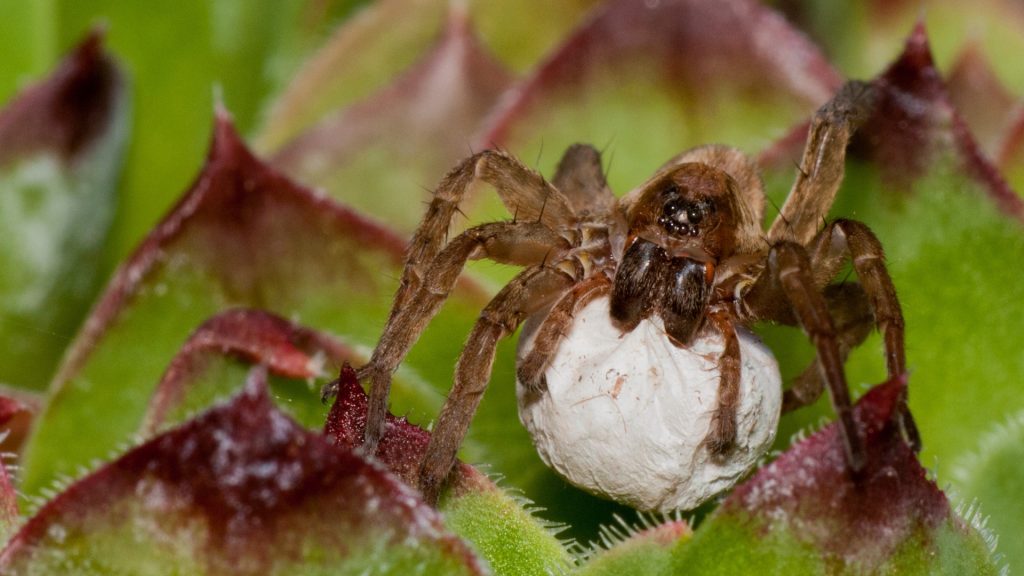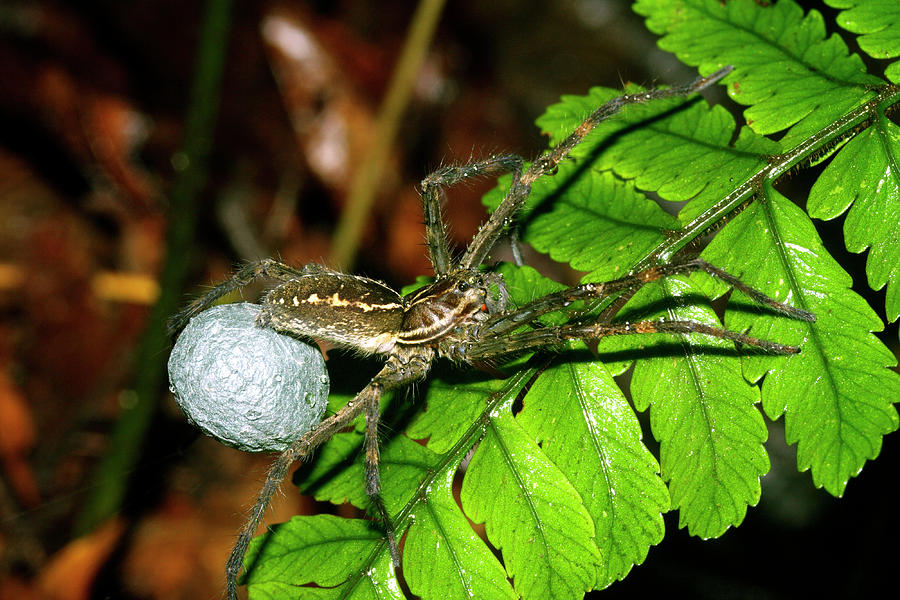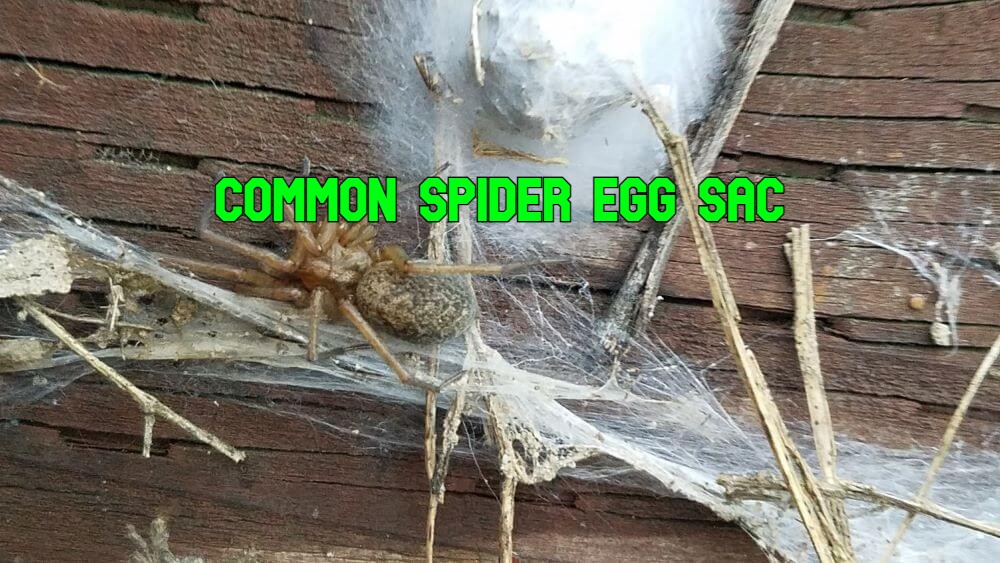
Egg sacs of 15 species of Costa Rican spiders. Download Scientific Diagram
Color: Spider egg sacks most often appear white or off-white, though some are brown, yellow, or even greenish. If you see a pink or black cotton ball-like fluff, it's unlikely to be a spider egg sack.
Common twotailed spider egg sac Project Noah
Spider - Egg Sacs, Reproduction, Anatomy: Female spiders produce either one or several egg sacs. In many species the female dies after producing the last egg sac; others provide care for the young for some time. The young of most species are independent when they emerge from the egg sac. Spiderlings resemble adults and shed their skins (molt) as they increase in size.

How To Get Rid of Spider Eggs? A Complete Guide Pest Samurai
Introduction Spider egg sacs are an important aspect of spider behavior and reproduction. These sacs contain the eggs of female spiders and are crucial for the survival of the species. Identifying spider egg sacs can provide valuable information about the types of spiders in a particular area, as well as their behavior and habitat.

Wolf Spider With Egg Sac Photograph by Dr Morley Read/science Photo Library Pixels
Spider egg sacs vary greatly in size, shape, and color. Most tend to be cream, brown, or white in color. They may be round, tear drop shaped, or even spiky. One commonality is that egg sacs are generally about as big as the spider that produced it. Spider egg sac by Richhoyer99 / CC BY (https://creativecommons.org/licenses/by/3.0)

How to Identify Spider Egg Sacs 11 Steps (with Pictures)
Spider Eggs: 1. Often mistaken for the spider web's sac itself. 2. Often look like tiny pearls. 3. Laid in a cluster of dozens to hundreds. 4. Typically not laid on animals or out in the open.

Huntsman Spider With Egg Sac Photograph by Melvyn Yeo/science Photo Library Pixels
The egg sac is either carried around by the female or hidden in the web. Egg sacs of large spiders may contain several hundred eggs. The eggs hatch in about two to three weeks after they are deposited. Most young spiders mature to adults in about one year. Male and female spiders live separately and only come together to mate.

How to Identify Spider Egg Sacs 11 Steps (with Pictures)
Color is one of the key features to identify black widow spider eggs. The egg sacs are usually white or yellow in color, with small brown or black spots on the surface. However, it is important to note that the egg sac's color may vary depending on the female spider's diet and habitat. Some may appear to be beige or tan.

spider egg sac Cyrtophora citricola
1 Notice the shape and texture. To determine if what you are looking at is a spider egg sac, consider the shape and texture. Spiders create egg sacs out of silk webbing, so the shape and texture may vary depending on the type of spider that created it. Some common spider egg sacs shapes include: [1] round ball

How to Identify Spider Egg Sacs 11 Steps (with Pictures)
The eggs rest safely within an egg sac, protected from the outside world. At a glance, this structure is pretty easy to identify. It is silky, teardrop- or gourd-shaped, and creamy or yellowish in.

What You Need to Know About Spider Egg Sacs
Shape and Texture The shape and texture of the spider sacks are different from one species to another. Many spider sacs have the shape of a round ball. But the roundness of the sac isn't characteristic of all spiders. Some lay irregular shape sacs. A spider is guarding her egg sac

Spider egg sac
The egg sac of the brown widow spider is round with distinctive spikes, whereas that of the black widow is round and smooth. Note the time of year. Many spiders hatch out of egg sacs in the spring, but noting the date you found the egg sac can limit your search to species that were mating during that time. Use a guide to identify your spider.

BugBlog Spider eggs and egg sacs
Attributes Egg sacs (207) Dorsal (Top or back) (131) Webs (41) Lateral (Side) (39) Spiderlings (Baby spiders) (7) Eyes (5) Ventral (Underside) (5) With Prey (4) In Retreat (2) Accidental adventive (1) Pictures ( 1-50 of 207 ) < 1 2 > Enlarge Picture Steatoda triangulosa (Triangulate Cobweb Spider) Family Genus Species Submitted Dec 5, 2023

BugBlog Spider eggs and egg sacs
One female spider can produce one to five generations, but the average spider only lays two egg masses. Male yellow sac spiders mature at 119 days, while females mature at 134 days.

Spider Egg Sack
"There is a whole long list of indoor pests—moths, beetles, cockroaches, bed bugs, fleas—all of those are eaten by spiders," he explains. Plus, spider bites aren't as common as you might think..

How to Identify Spider Egg Sacs 9 Steps (with Pictures)
Spider eggs come in various shapes, sizes, and colors depending on the species. You may find these tiny orbs of life clustered together in egg sacs, which are usually covered with silk to protect the developing spiderlings. For instance, some egg sacs may resemble cotton balls, while others could look like small, delicate pouches.

Spider Egg Sac 10 Facts You Should Know (& Identification Chart)
This process is called "molting." Trying to identify the species of spider by examining the nymphs may be difficult because they are often very small. However, having a basic knowledge of what spider egg sacs look like may give you clues as to what species a spider may be. EGG SAC PLACEMENT